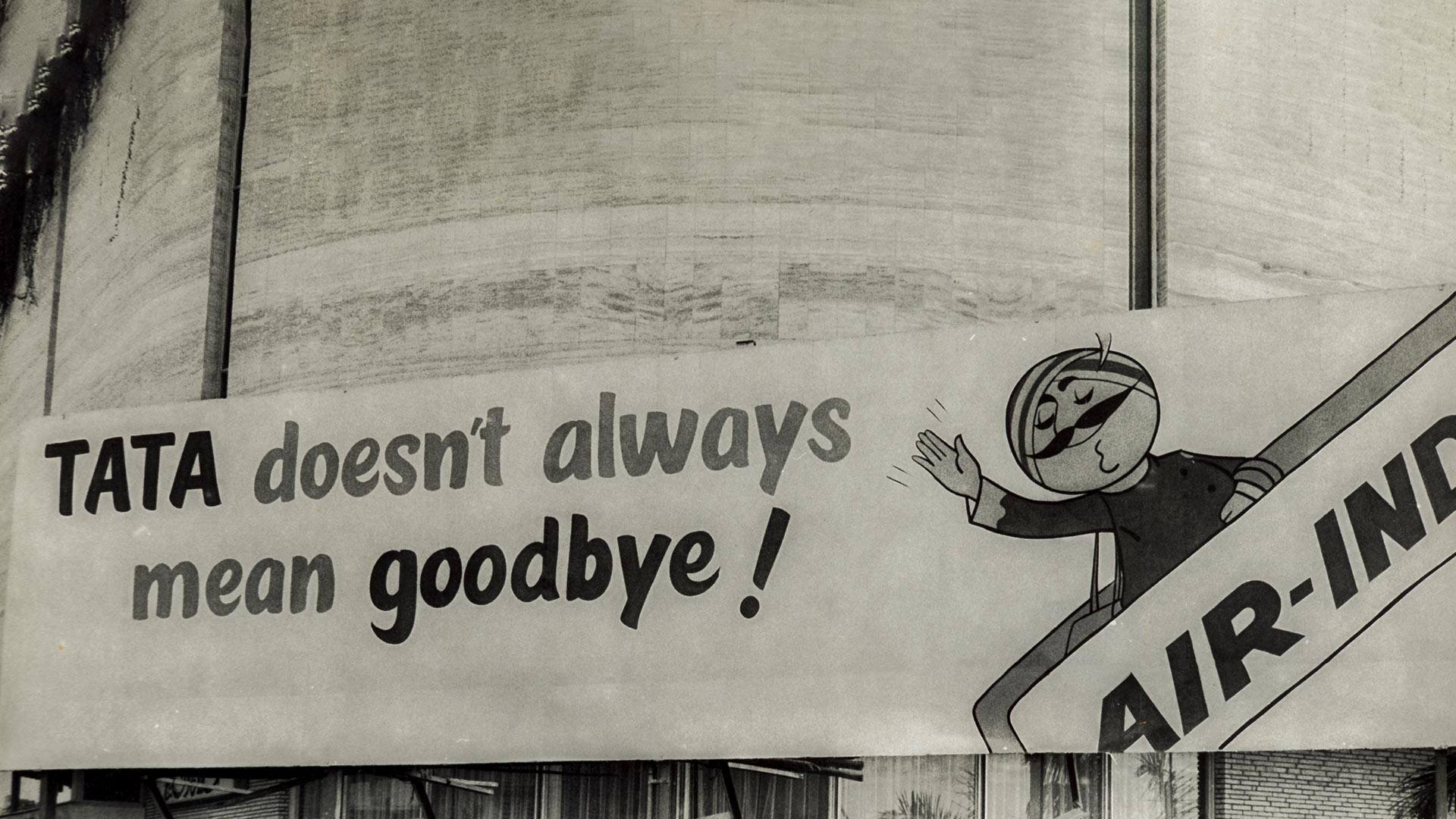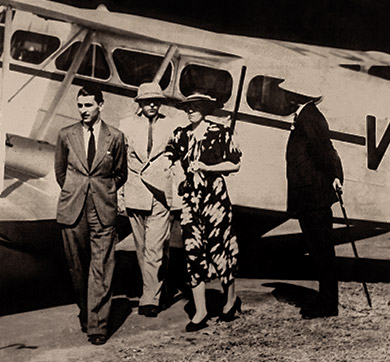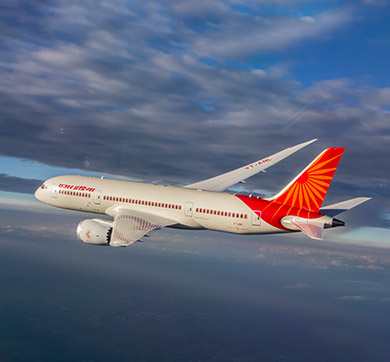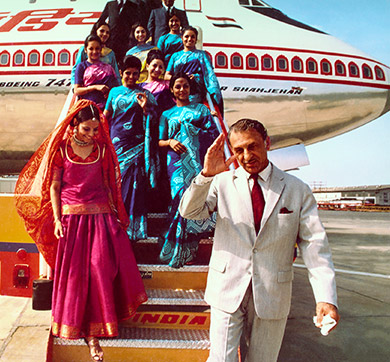January 2022 | 1961 words | 7-minute read
Once, when JRD Tata was questioned about the most satisfying experience of his life, he instantly replied, “The flying experience has dominated. No other can equal the excitement of the first solo flight.”
The opportunity to build a great global airline came next; a year after he qualified as a pilot, he planned the creation of Tata Airlines, which ultimately became Air India.
Tata Airlines was a pre-independence gift to the nation from the House of Tata. When the Tatas decided to enter the field of aviation in the late 1920s, it was history repeating itself. The vision, courage and the spirit of adventure which Jamsetji demonstrated at the time of setting up the steel company were once again exhibited by JRD Tata.
Under JRD’s guidance, Tata Airlines proved that even in an (then) advanced area like international aviation, Indian entrepreneurs could compete with global giants. This, at a time when a newly independent India needed a boost to stake its claim on the industrial map of the world. It was inspired leadership that helped achieve this miracle in the face of numerous obstacles – the sort that had constrained the country’s progress in several other fields in the past.
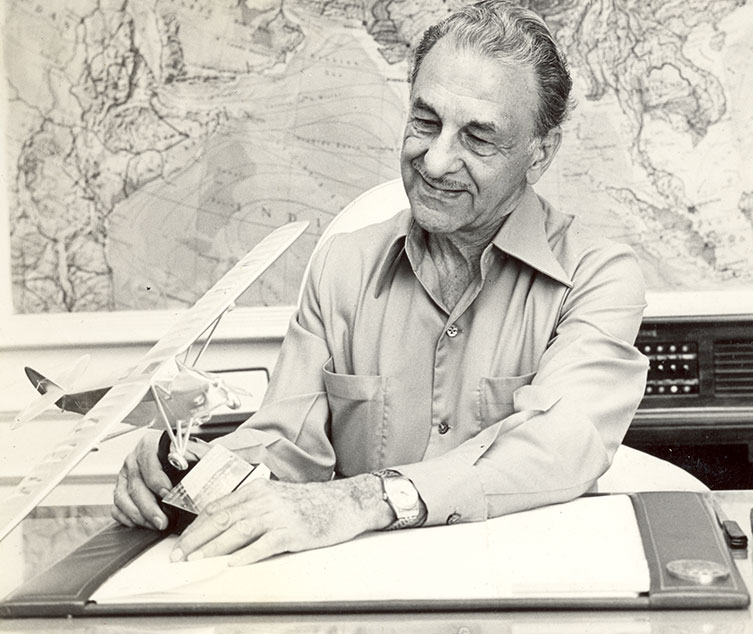
With Sir Dorabji Tata’s approval it was decided that the air-mail service operations would be undertaken as a departmental operation by Tata Sons Ltd. This Aviation Department was enlarged and renamed Tata Airlines in 1938, which became Air India Ltd in July 1946.
As aviation was his first love, it was not surprising that JRD jumped at the idea of starting an air-mail service between Karachi and Madras, when two intrepid ex-RAF Britishers – JS Newall and Nevill Vintcent – suggested such a scheme on March 19, 1929. JRD was very impressed by the proposal, and showed it to his mentor, JCK Peterson, under whom he had served at TISCO. With the help of Peterson, JRD managed to acquire the blessings of Sir Dorabji, Chairman of Tata Sons and the eldest son of Jamsetji Tata. He is said to have “pleasantly surprised them all by giving it his OK”. It was decided that the air-mail service operations be undertaken as a departmental operation by Tata Sons Ltd.
Their surprise was not without cause. Over a decade earlier, Sir Dorabji had rejected a similar offer by Holt Thomas — a pioneer of commercial aviation in the UK — to set up an air transport company to manufacture aircraft and start a business in India in collaboration with the Tatas. The grounds for rejection were that the Tatas were so fully occupied with their other schemes that they had no time to manage the air transport business.
Stops and starts
The Tatas' attempts at aircraft manufacture and aerial transportation are a little over 100 years old. The Aerial Transportation Company of India Ltd, registered on December 20, 1918, was a precursor to Tata Aircraft Ltd, formally registered on March 19, 1942.
The question of taking an active part as Managing Agents in the manufacture of aircraft and operation of air transport services in India, in collaboration with the British, emerged before the Tatas in 1918. The initiative was taken by their London Office at Tata Limited by BJ Padshah who was posted in London at that time.
Negotiations to collaborate on the business of manufacturing of aircraft and aerial transport in India were on between Mr Padshah and the London Office on the one hand, and Mr Holt Thomas, the founder and chairman of the biggest known aviation combine, on the other.
On September 12, 1918, Tata Limited, London, informed Tata Sons that it had secured the Managing Agency (on usual terms, ie, 10 percent of net profits) of two new enterprises, sponsored by Holt Thomas viz (i) The Aircraft Co of India and (ii) the Aerial Transportation Co of India, and advised them to get these two registered as private limited companies immediately. The Tatas had the option of subscribing up to half of the capital of Rs 20 lakh in both the companies, within six months of registration.
The proposition was not an entirely new one. The aviation project was under consideration since June as a Sakchi subsidiary.
Within three days of the first cable, the proposed agencies were firmly declined, as the Chairman, Sir Dorabji Tata, was absolutely opposed to increasing the firm’s activities in any form whatsoever, as he felt that “from the point of view of our multiplicity of interests, we have got quite enough work to do and could not handle any more, new business.”
However, at BJ Padshah’s persistence, Sir Dorabji had consented to the registration of the Aerial Transportation Company of India in December 1918, with the express understanding that the Tatas would have nothing to do with it. The Tatas held out hope that the Tata Industrial Bank might accept these agencies.
Tata Airlines, under Tata Sons, flourished, and its profits rose substantially. Soon, the airline was carrying both passengers and mail. It was operated with great discipline and efficiency, and in 1939, a passenger could fly from Bombay to Delhi at slightly less than first-class rail fare then!
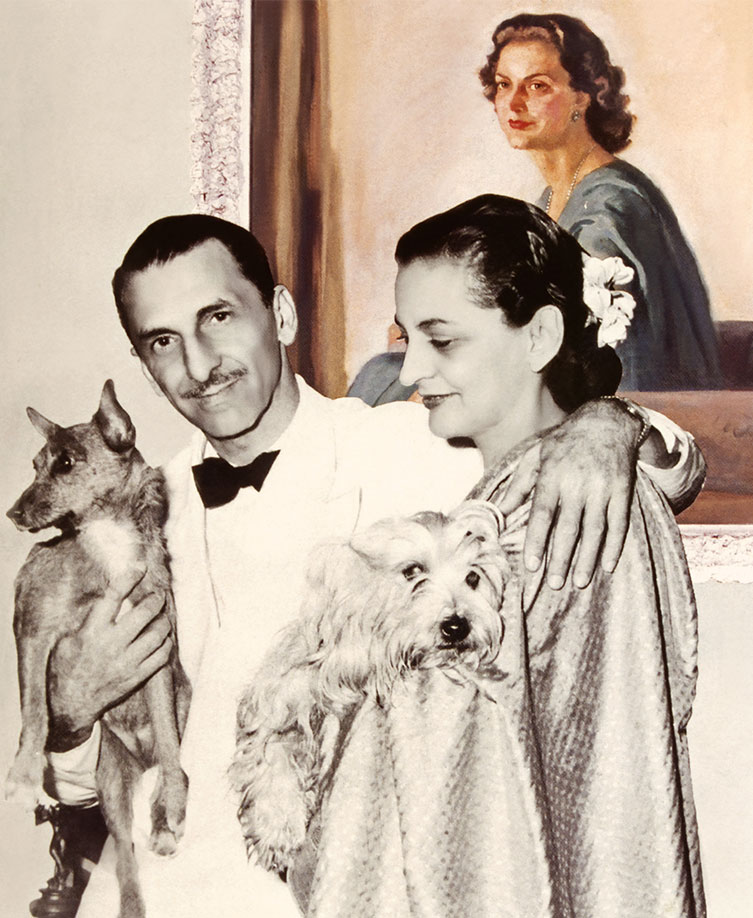
Into a new horizon
Once government approval came, JRD went to England to purchase two Puss Moths. He visited the factory of De Havilland and met the old man himself. Sir Geoffrey De Havilland was a towering figure in aviation. JRD found him, in some ways, a sad person. He had lost three of his sons in the First World War. Of the two planes purchased, JRD had hoped to fly one to India himself, accompanied by his wife. The Puss Moth could accommodate a pilot in front, two passengers in the rear or a hundred pounds of mail. On the flight to India, they stopped at Naples, where JRD developed a high fever. He still took off, flew for ten minutes, and returned to the airport. Flying on seemed out of the question.
The Lloyd-Triestino Shipping Line vessel, Victoria, was scheduled to depart Naples soon. JRD and Thelma booked their passage on the ship and towed the plane, attached to the back of their car, to Naples.
The Puss Moth was a beautifully designed plane. All that needed to be done was to fold its small wings so that its width did not exceed that of the car! The plane was hitched onto the deck of the ship, and it travelled with the Tatas as their personal baggage. It arrived at Ballard Pier, where it was loaded onto a bullock cart, and the plan then trundled along to the Juhu mudflats.
“Those were adventurous days. We had no navigational or landing aids whatsoever on the ground or in the air, and no radio. In fact, we did not even have an aerodrome in Bombay. We used a mudflat at Juhu and the sea was below what we called our airfield, and during the high tide of the monsoon the airfield was at the bottom of the sea! So we each had to pack up lock, stock and barrel – two planes, three pilots and three mechanics – and transfer ourselves to Poona where we were allowed to use a small field as an aerodrome, appropriately under the shadow of the Yeravada jail!
“Flying single-engined planes without radio is pretty tough during the monsoon. On the other hand, as planes landed slowly in those days, forced landings in emergency in the small fields were possible.
"We had quite a few of them. I remember one forced landing in 1933 or 1934, between Bombay and Madras, when I spent a couple of hours on the ground, surrounded by wonderfully friendly villagers who had never seen a plane before, and then flying into the night and landing by a quarter moon at Bellary on a small 500-yard toy airfield. As I was very much overdue, and not expected at all that night, I spent the night under the wing of the plane. There wasn’t even a watchman, leave alone a building.
“But my most exciting and cherished memory of those days was undoubtedly my inaugural flight from Karachi to Bombay, when a dream became a reality.”
— Address by JRD Tata to Members of Rotary Club of Bombay, March 1933.
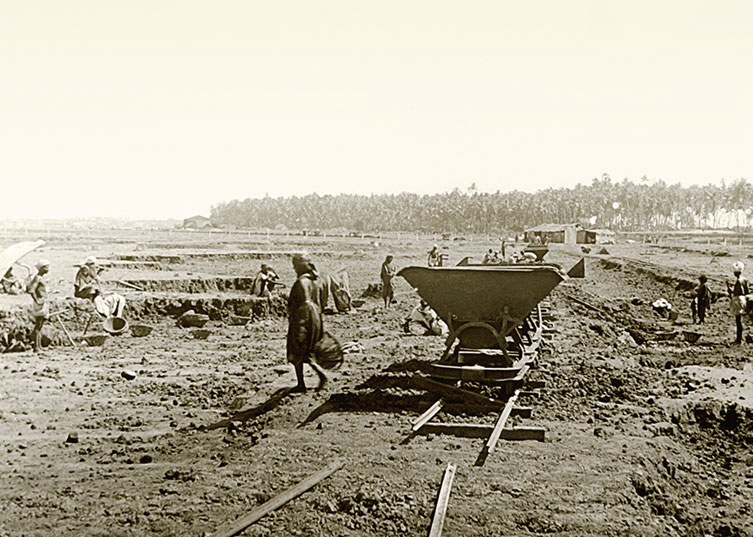
Following the registration of the Aerial Transportation Company of India in December 1918, Mr Padshah had been very active in February and March in Delhi, and on March 15, 1919, he summed up the position in his cable to Tata Limited, London: Inform Holt Thomas - been Delhi twice - Government erecting aerodromes, expect inviting tenders for mails from competent companies after companies have experimented on site. Military requirement aircraft small. Postal subsidy for aerial mails probable. Desire Holt Thomas send competent technical man with business qualifications equipped with two machines for experiments, should arrive in July.
Mr Padshah’s notes of his conversation with various government officials in Delhi, sent to Mr Treble on March 18, 1919, confirmed the cable mentioned above and gave further details as follows:
...The Post Office has considered the plans and estimates for aerial mails between Bombay and Calcutta and between Calcutta and Rangoon...It has been decided that this work should be done by private enterprise with subsidies from the Post Office.
...It is anticipated that private enterprise will come forward to bear this initial loss in the hope of eventual gain, a portion of which will arise from India, being the highway between Europe and Australia.
The war years
Bombay House was informed by Mr Treble from London in February that Mr Holt Thomas had welcomed a proposal from his friend Sir Cecil Graham (of WA Graham & Co of Bombay) for co-operating with him and the Tatas or the Industrial Bank with respect to the newly registered aviation company in India. Graham did not want to substitute themselves for the Tatas but instead, wanted to join them in the project. Mr Padshah was of the opinion that the “alliance will greatly help Industrial Bank”.
Graham suggested that Tatas could handle the manufacturing of aircraft; the air-transport business and the agency fees could be pooled and shared equally by the two parties. Mr Treble of Tata Limited, London, promised to forward the proposal to Bombay.
Unfortunately, owing to the pressures of the prevailing economic conditions, the Tatas decided not to have anything to do with aviation and soon the Industrial Bank followed suit.
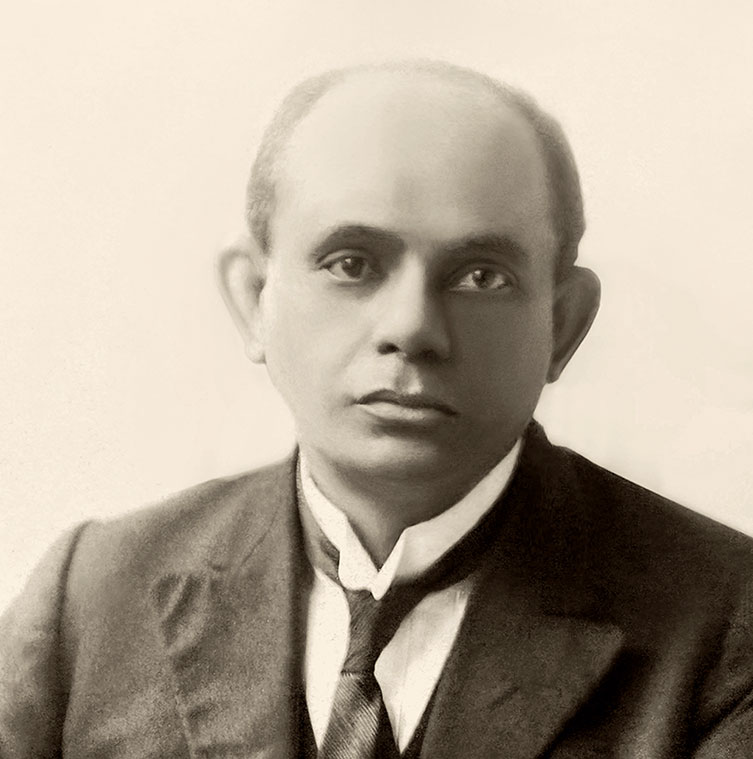
With the outbreak of war in late 1939, normal civil aviation activities were suspended, and the government took over civil operations. The Tata aircraft were put at the government’s command, where they rendered exceptional service to the Royal Air Force (RAF), including transporting wounded military personnel and refugees. The De Havilland 86 was commandeered for coastal operations. The Tatas operated internal services for the government and for RAF Transport. Two aircraft, the Beechcraft Expediter and that phenomenal plane, the Dakota (DC3), came on the scene.
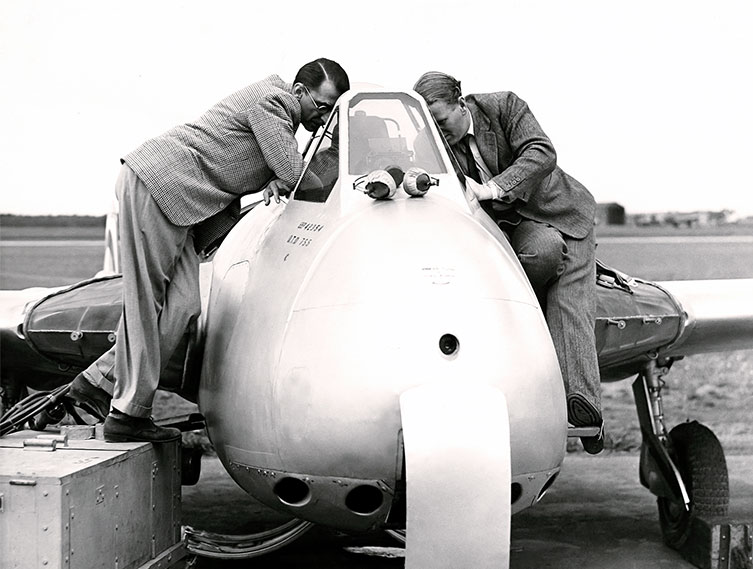
The airlines were given many special assignments on behalf of the RAF. They had to transport priority mail, freight and civilian passengers, besides carrying military personnel to various destinations in and out of India. Besides this, some other services which Tata Airlines rendered to the RAF were:
- Surveying an alternate air route to the U.K. via Oman and Saudi Arabia
- Transporting civilian refugees from Burma
- Conducting flights in connection with the camouflage school at Pune
- Transporting sick and wounded military personnel from the warfront
- Overhauling and maintaining RAF equipment and flight testing of trainer aircraft
The author, RP Narla, is archivist, Tata Central Archives.
Photographs courtesy Tata Central Archives.
Read Part 2 of this two-part series.




